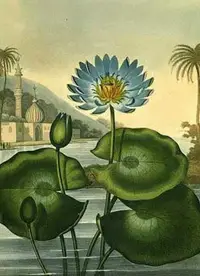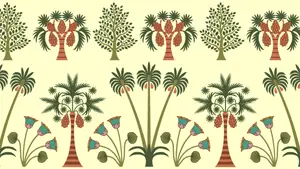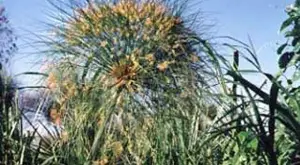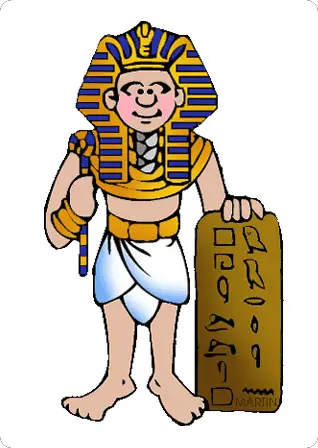Egyptian Plants
Egypt was and continues to this day to be mostly desert. The people of the area benefited from living close to the Nile River. Every year the Nile floods and the flood lasts three months. This has been going on for thousands of years. The floods might seem to be an inconvenience, but it’s these floods that made survival possible for the Egyptians. Flooding brought rich dark silt and mud into the area and when it was deposited, it acted as a fertilizer. While there weren’t many trees in Egypt, there were a lot of plants, flowers and crops for food.


The ancient Egyptians placed a lot of value on their gardens. Most of the gardens were in the royal palace and the temples, but later in their history, more wealthy families had pleasure gardens. There were also gardens set aside as funeral gardens, and these were miniature versions of the pleasure gardens. Palace gardens were very large and had ponds, trees and flowers. Temple gardens were used for both decoration and to grow herbs and as a botanical garden. The temple gardens had many plants that were imported from other countries and often rows of trees.

There are more images of the pleasure gardens, and these were smaller, but always included a pond in a rectangle shape filled with fish and lotus blossoms as well as flowers around the edge. It was common to see rows of trees including palms, sycamores and grenadiers mixed in between the flower beds. The ponds had columns and walls that were decorated with grapevines.


Some of the favorite flowers of the ancient Egyptians included the lotus blossom, rose, jasmine, anemone, daisy, chrysanthemum, mandrake and poppy. They are used for both religious ceremonies and as decorations and perfumes. There were over nineteen species of fruit and shade trees found in one single temple garden. These included the tamarisk that produces a lovely pink flower, willow trees, acacia and the sycamore. The favorite fruit trees included figs, dates, doum palms, pomegranate, olives, peaches, and the jujube. The persea tree was found in almost all of the garden types and was considered a sacred tree.

The ancient Egyptians grew many crop plants including: lettuce, leeks, garlic, green peas, onions and beans. They took pride in their fruit crops of pomegranates, dates, grapes and plums and used many fruits to create wine. Olives from the olive trees were used for their oil and fruit. The oil was commonly used to light lamps and to cook with.

The papyrus plant is found naturally in Egypt and is one of the most valuable of plants. The ancient Egyptians used this plant for many purposes. Thatched roofs were made of the reeds and they had a process for the dried thin pieces of reed to create their paper. There were many types of palms found in the area and they were cultivated to add additional shade.

The one flower that appears in many ancient Egyptian pictures is the lotus flower. This is a flower that grows from the lotus plant as it floats in ponds. They grow in three colors: blue, white and pink and closes its blossoms at night, sinks into the water and then arises back up in the morning sun. The Egyptians used the lotus flower as the symbol of sun, creation and rebirth. When the two portions of Egypt united under one pharaoh, they used a symbol of an intertwining lotus plant with a papyrus to represent to union of the two nations.

Although Egypt was located in a desert, their kingdom developed due to their ability to produce an abundance of food. They did import some plants and trees from other countries and they were incredibly smart at using all of the resources that they had.



